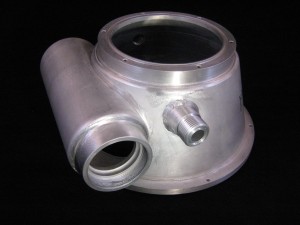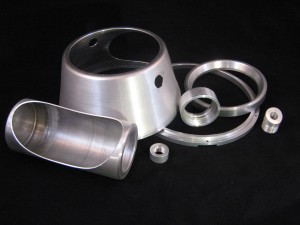 Brazing would seem like a simple process, but it is inherently complex. Brazing is typically used to join either thin wall materials of the same type or because it allows the joining of dissimilar metals in the process. There are two basic forms of brazing: dip brazing and oven brazing. Your specific application will dictate the brazing process that is required.
Brazing would seem like a simple process, but it is inherently complex. Brazing is typically used to join either thin wall materials of the same type or because it allows the joining of dissimilar metals in the process. There are two basic forms of brazing: dip brazing and oven brazing. Your specific application will dictate the brazing process that is required.
Dip Brazing
Dip brazing is a process where component parts are developed to fit together through a joint which is the interface between two component parts. Components are pre-cleaned to remove any debris or oxides from the processing. Parts are either tac welded or fixed to hold them in position. Then all the joints are prepared with a braze putty. Braze putty is unique to the metals being brazed and will vary from application to application. This putty is filled around the joints and the parts are then loaded into the braze fixture.
In dip brazing, the parts being brazed will be heated in an oven to get them to an elevated temperature. At that time, parts are then removed from the preheated oven and placed in a salt bath that is heated nearly to the melting point of the base materials where the metals become soft. The braze putty melts and begins to flow through the braze joint. The salt bath helps hold the part in the bath by applying pressure to the assembly to help hold its shape. After a specific period of time, the parts are removed from the bath and drained of all fluids while cooling. The result is a fully fuzzed assembly. Some cleanup of braze alloy is typically needed.
 Oven Brazing
Oven Brazing
Oven brazing is a process where component parts are developed to fit together through a joint which is the interface between two component parts. Components will be pre-cleaned to remove any debris or oxides from the process. Parts are either tac welded or fixed to hold them in position and all the joints are prepared with a braze putty. This putty is unique to the metals being brazed and will vary from application to application. It is filled around the joints and then the parts are loaded into the braze fixture.
In oven brazing, the parts being brazed will be heated in an oven to get them to an elevated temperature where braze putty begins to flow. The fixture is what holds the parts in place while brazing, but the best designs use mechanical means to hold the materials in place. Parts are maintained at an elevated temperature for a defined period of time based on joints, size, volume, etc. to allow for the proper temperatures to be achieved and held for the defined timeline.
In the oven brazing process, it is key that the parts are cleaned, that the putty and fixturing is correct and that the oven for the brazing is cleaned correctly so it is accurate enough for the application. Inaccurate temperature control or an unclean oven will result in a failing joint.
Benefits of Brazing
- Joining of thin wall materials
- Liquid & vacuum tight braze joints
- Multiple pieces can be joined at one time
- Process control compared to other techniques that may be operator controlled
- Good tolerance controls
- Dissimilar materials can be brazed together
- Cost-effective solution
Critical Criteria for Brazing
- Joint design
- Braze alloy
- Fixture design
- Part pre-cleaning
- Oven cleanliness (oven braze or preheat in dip braze)
Vulcan GMS has been providing brazed assemblies to our customers for more than 20 years. We have an expert team that can help you through the process and ensure your product is successful.
In addition, Vulcan GMS also can produce the machined or fabricated components for your assembly as well as offer you a one-stop shop for your machining, spinning, press forming, fabricating, assembly and brazing needs for your specific application. Contact Vulcan GMS to learn more.

